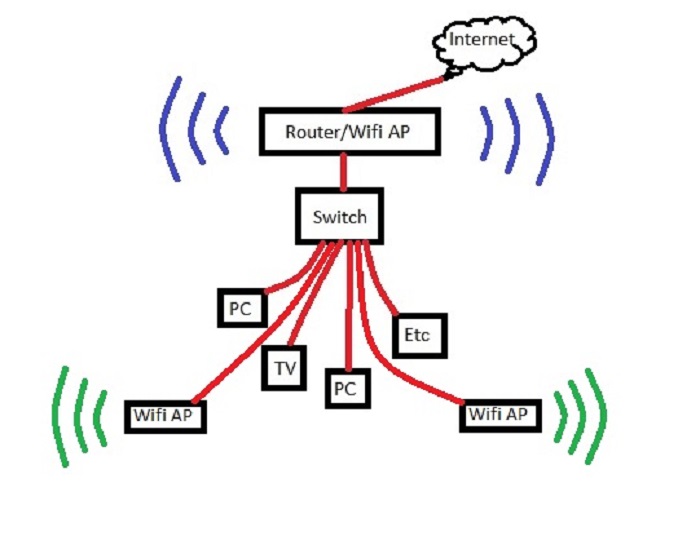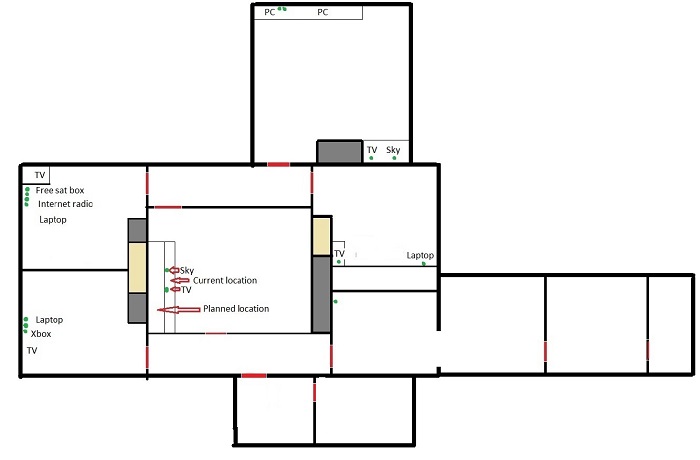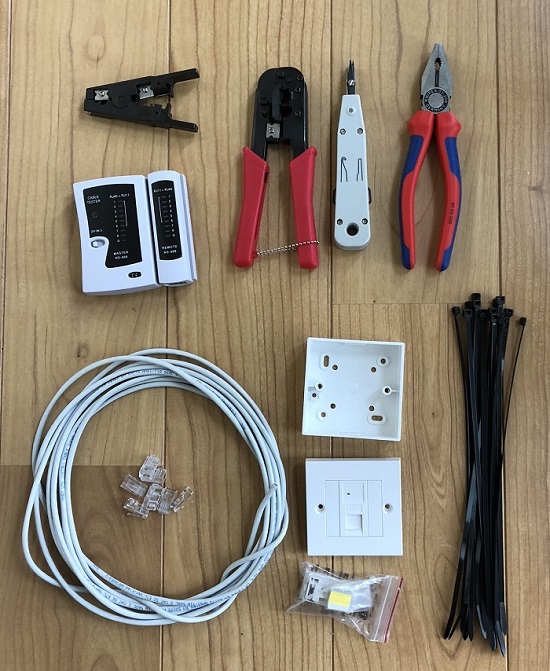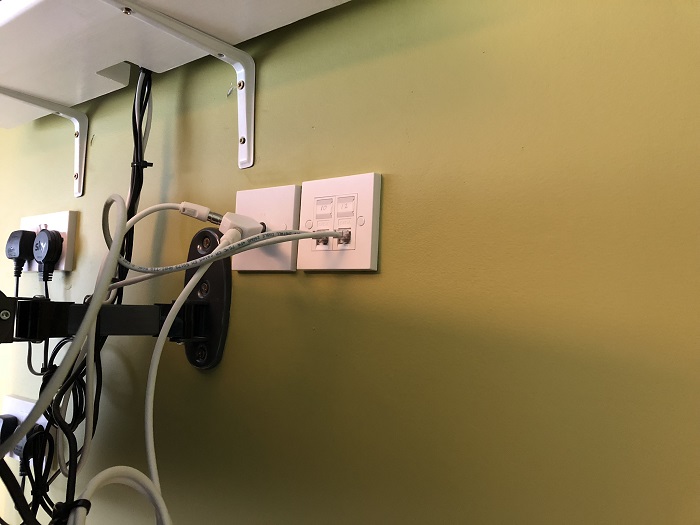

Home network
We first got broadband over the landline infrastructure in our area in 2003. The speed at the time was up to 5Mpbs. Many years later, this was still the case. In 2016 Imagine commenced supplying LTE broadband based on wireless 4G infrastructure. When this became available, I signed up. The speeds were advertised as up to 70 Mbps but at times they were in excess of this, reaching 90 Mpbs, while at high traffic times, such as Sunday evenings, the speeds were as low as 5 Mbps.

In February 2017, in order to take advantage of the higher speed available from Imagine and keeping in mind that my home was on the Eir rural 300 route for fibre broadband, I wired the house with ethernet cables running from a network switch and the internet router at a central location in the house.
By then I had also become a Sky Q customer. Sky Q works on the basis that there is one main Sky Q box in each household. This box receives the digital satellite signal. Recorded and downloaded programmes are saved on the main box. Live broadcasts and saved programmes can be watched on the television connected to the mainbox. With a multiroom subscription, the main box will send information over either a wireless or wired LAN to the miniboxes located in other rooms.
The anticipated benefits were higher speeds at devices connected by wire, such as PCs, laptops, smart TV and Sky Q boxes while freeing up wifi bandwidth for wireless only devices such as smart phones and tablets. I also considered that it would be more advantageous to have the Sky Q miniboxes communicating over ethernet. The default setting on a Sky Q infrastructure with more than one box is for each box to broadcast its own wireless network to communicate with the others. Thus wifi network saturation was a concern.
In planning the network, I calculated the total amount ethernet I cable I would need. I also considered how the settings on the Sky Q boxes and Smart televisions could be changed to turn off any wifi networks generated by the Sky Q boxes and force each device to communicate over the wired network.

Figure 1 shows the initial conceptual plan of the wired network.
The ethernet cables were to be run through the attic, converging in the kitchen as the best central location in the house, both in terms of running the cables through the attic at a point where the roof is highest and as the location for the wifi router. A 24 port network switch was to be located at this central location as well. The initial plan was to have about 20 cable runs fanning out from this location across the house. Figure 2 is a plan of the house with some of the network locations marked. The planned location marks where the network switch and router were to be installed.
After taking advice from online forums, I determined the following tools and materials were necessary:
- Network switch
- Cat5e ethernet cable
- Trunking to cover cables running from ceiling down walls
- Overalls to protect clothing from fibreglass insulation in attic
- RJ45 plugs
- RJ45 sockets
- Wall boxes and plates
- Cable ties
- Labels
- Pliers
- Ethernet cabling kit, including:
- Punchdown tool
- Crimping tool
- Cable tester
- Cable stripper/cutter
- Step ladder for working at any high point
- Ladder for access to attic

Aside from the network switch, all other tools and materials were available at local electrical suppliers. The network switch, a 24 port gigabit desktop switch, was sourced online.
Having acquired the necessary supplies and a helper for the day (my brother manfully stepped up the plate without objection to the amount of crawling through the attic), I set about the installation. The first part was running the lengths of cable necessary through the attic from the kitchen to each network point noted. As some points would have 2 or 4 wall sockets, this had to repeated to the same network location. I fed the cable up to the attic where my brother then crawled to the point above the planned network point and fed the cable end down to me at those locations.
Each cable end was labelled and I then went about attaching plugs at the network switch end of each cable and wall sockets at the network point end of each cable. We ran trunking along and stuck to the wall at each network point and screwed the wall boxes to the wall. Then the sockets had to be inserted to the wall plates which were in turn screwed to the wall boxes. In one room, new insulation was due to be fitted, so the trunking was not used here.
Ultimately, the project cost in the region of €400 and took two men one day. It was well worth it and when the fibre broadband was installed in January 2018, internet speeds in excess of 900 Mbps were obtainable on wired devices. The images following show aspects of the completed project:

